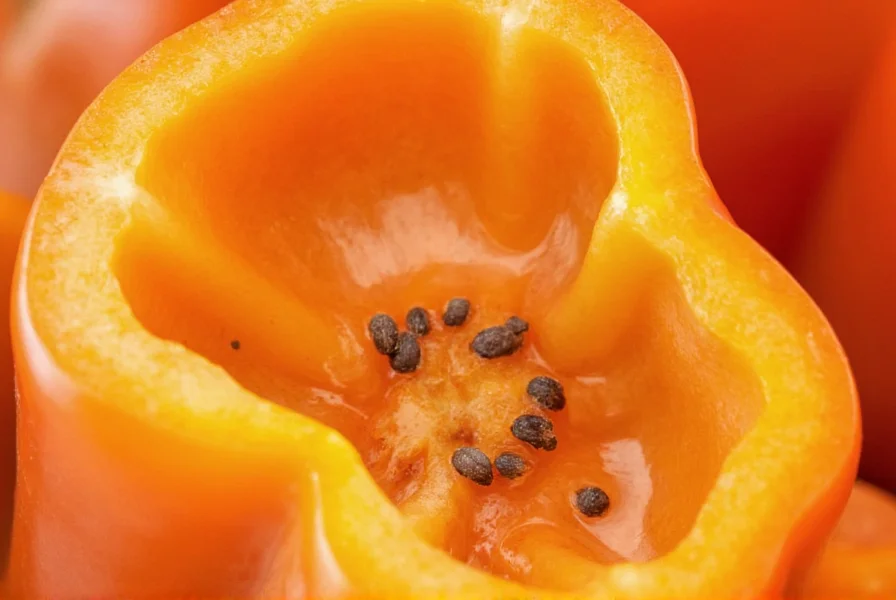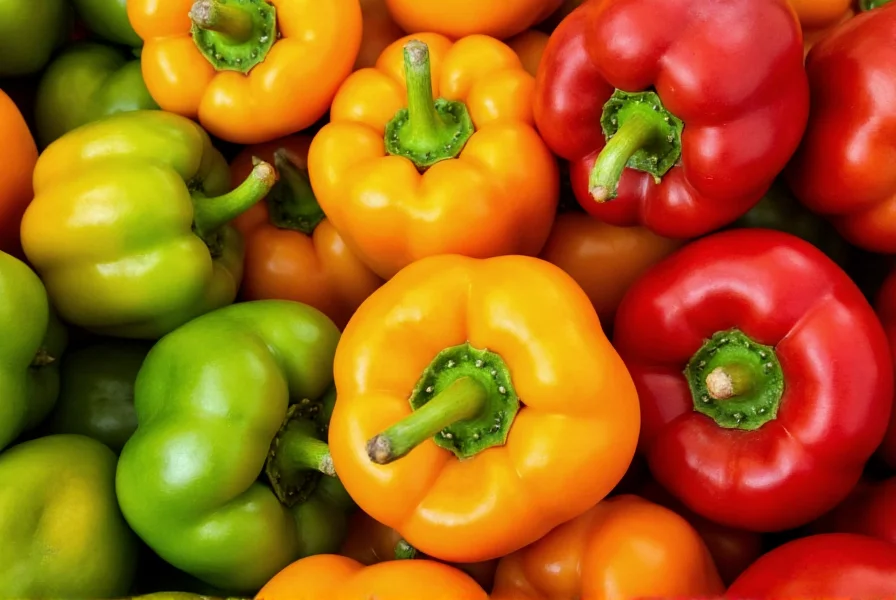Understanding whether a pepper is a fruit or vegetable requires examining both botanical science and culinary tradition. This classification confusion affects many common foods, creating ongoing debates among gardeners, chefs, and nutritionists. The answer lies in recognizing the distinction between scientific classification and practical kitchen usage.
Botanical Definition: Why Peppers Qualify as Fruits
From a botanical perspective, a fruit develops from the ovary of a flowering plant and contains seeds. Peppers perfectly fit this definition. When a pepper plant flowers, the blossom eventually transforms into the pepper we eat, with seeds enclosed inside. This biological process places peppers firmly in the fruit category alongside tomatoes, cucumbers, and eggplants.
The scientific family for peppers is Solanaceae, commonly known as the nightshade family. Within this family, peppers (Capsicum species) produce their characteristic bell or chili shapes as mature fruits. Unlike sweet fruits such as apples or berries, peppers don't contain high sugar content, which explains why they're not typically eaten as dessert items.

Culinary Classification: The Vegetable Perspective
In cooking and nutrition, vegetables are typically defined by their savory flavor and usage in main dishes rather than desserts. Peppers' low sugar content and versatile savory applications make them function as vegetables in meal preparation. Chefs rarely use peppers in sweet dishes, instead incorporating them into salads, stir-fries, and savory recipes.
Nutritionally, peppers are grouped with vegetables in dietary guidelines. The USDA classifies peppers as vegetables in MyPlate recommendations, focusing on their vitamin content and culinary usage rather than botanical accuracy. This practical approach helps consumers understand how to incorporate peppers into balanced meals.
Historical Context of Food Classification
The fruit-versus-vegetable debate isn't unique to peppers. The most famous legal case occurred in 1893 with Nix v. Hedden, where the U.S. Supreme Court ruled that tomatoes should be classified as vegetables for tariff purposes, despite their botanical classification as fruits. This established the precedent that culinary usage often overrides botanical accuracy in legal and commercial contexts.
Peppers followed a similar trajectory. While botanists have always recognized peppers as fruits, agricultural regulations and culinary traditions have treated them as vegetables. This dual classification creates interesting discussions about how we categorize foods based on different criteria.
| Food Item | Botanical Classification | Culinary Classification | Reason for Discrepancy |
|---|---|---|---|
| Peppers | Fruit | Vegetable | Low sugar content, savory flavor profile |
| Tomatoes | Fruit | Vegetable | Historical culinary usage, Supreme Court ruling |
| Cucumbers | Fruit | Vegetable | Used in salads, low sweetness |
| Eggplants | Fruit | Vegetable | Savory applications, texture |
Practical Implications of Pepper Classification
Understanding whether peppers are fruits or vegetables matters for specific contexts. Gardeners benefit from knowing peppers are fruits because this affects crop rotation practices and companion planting strategies. Fruit-bearing plants often have different nutrient requirements than leafy vegetables.
In cooking, recognizing peppers as vegetables helps with flavor pairing. Their savory profile complements other vegetables rather than fruits in most recipes. However, some sweet pepper varieties like bell peppers can occasionally bridge the gap, working in both fruit salads and vegetable dishes.
Nutritionally, peppers provide significant vitamin C and antioxidants regardless of classification. Red bell peppers actually contain more vitamin C than citrus fruits by weight, demonstrating how botanical categories don't always predict nutritional value.

Resolving the Classification Confusion
The pepper classification question reveals an important truth about food categorization: context matters. In scientific discussions, peppers are unequivocally fruits. In grocery stores, cookbooks, and nutrition guides, they function as vegetables. This dual identity isn't a contradiction but rather reflects how different fields approach food classification.
When discussing whether peppers are fruits or vegetables, it's helpful to specify the context. For gardening or botanical purposes, they're fruits. For cooking, meal planning, or nutritional guidance, they're vegetables. This nuanced understanding resolves much of the confusion surrounding pepper classification.
Frequently Asked Questions
Why are peppers considered fruits botanically?
Peppers develop from the flower of the plant and contain seeds enclosed within their structure, meeting the botanical definition of a fruit. All peppers form from the ovary of the pepper plant's flower, which is the key characteristic that classifies them as fruits in plant biology.
If peppers are fruits, why are they called vegetables?
Peppers are called vegetables in culinary contexts because of their savory flavor profile and how they're used in cooking. Unlike sweet fruits typically eaten as desserts, peppers are used in salads, main dishes, and savory recipes, which aligns with how we traditionally use vegetables in meal preparation.
Are all types of peppers fruits?
Yes, all pepper varieties including bell peppers, jalapeños, habaneros, and chili peppers are botanically classified as fruits. Regardless of heat level or color, they all develop from the flower of the plant and contain seeds, meeting the botanical criteria for fruits.
Does the ripeness of a pepper affect its classification?
No, the ripeness doesn't change a pepper's botanical classification. Whether green, yellow, orange, or red, peppers remain fruits throughout their development. The color change simply indicates different ripeness stages, with red peppers being fully ripe and containing higher nutrient levels than their greener counterparts.
How does pepper classification affect cooking?
Understanding that peppers are botanically fruits but used as vegetables helps with flavor pairing in cooking. Their classification explains why they work well with other vegetables in savory dishes but can occasionally complement fruit-based recipes, especially sweeter varieties like red bell peppers in fruit salsas.











 浙公网安备
33010002000092号
浙公网安备
33010002000092号 浙B2-20120091-4
浙B2-20120091-4